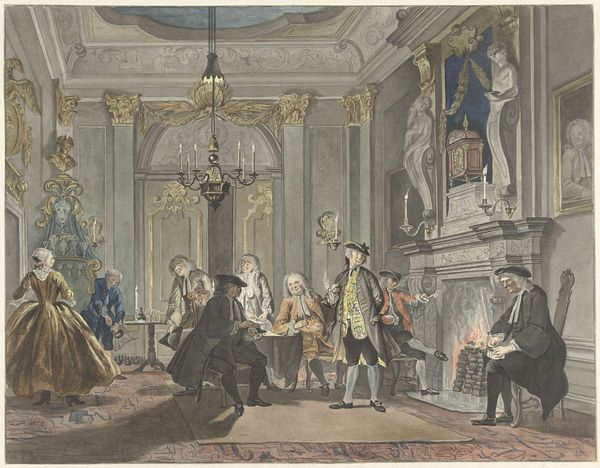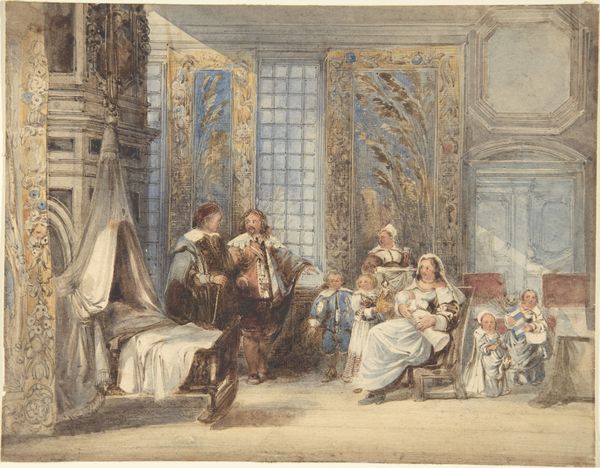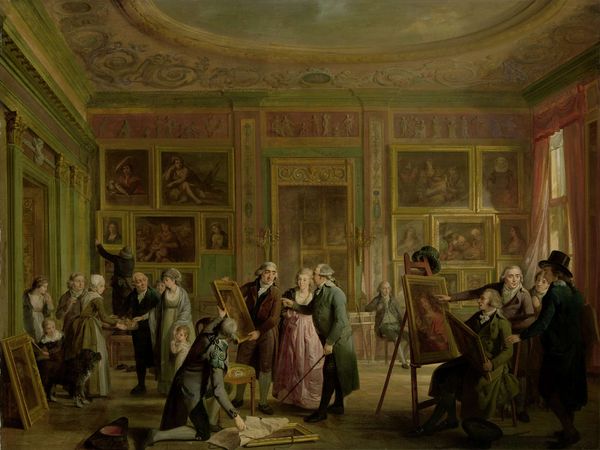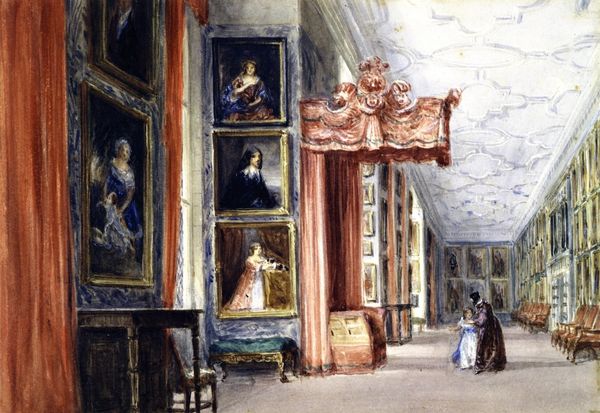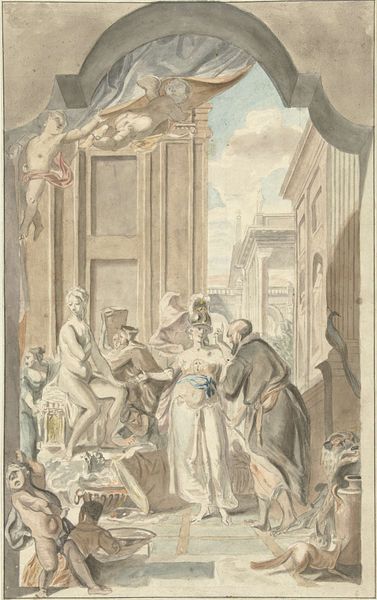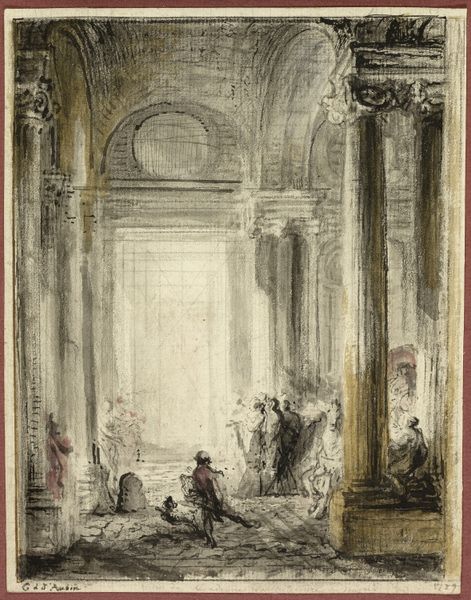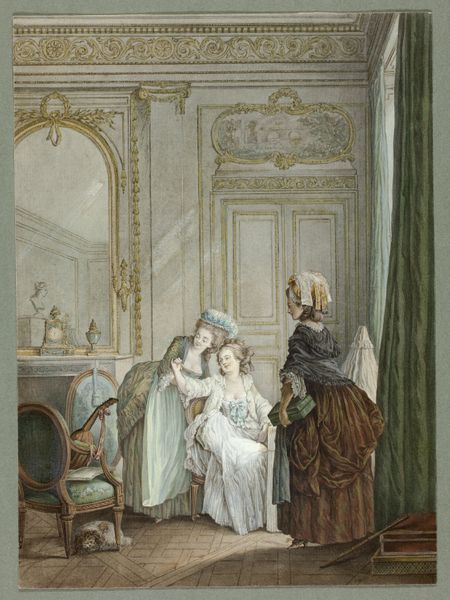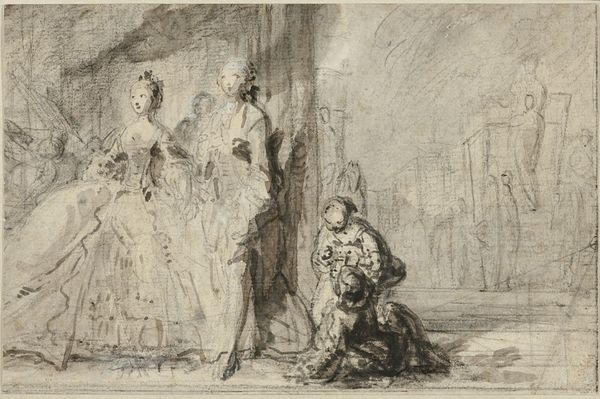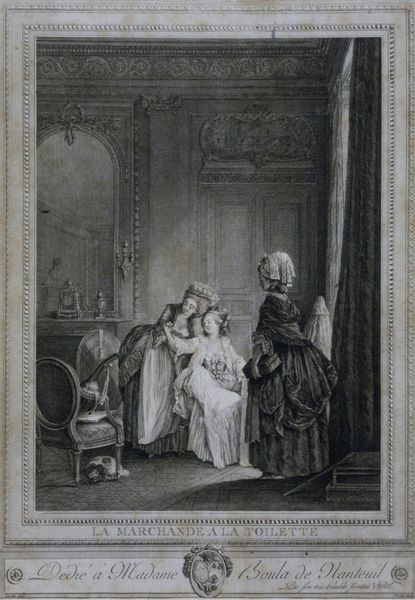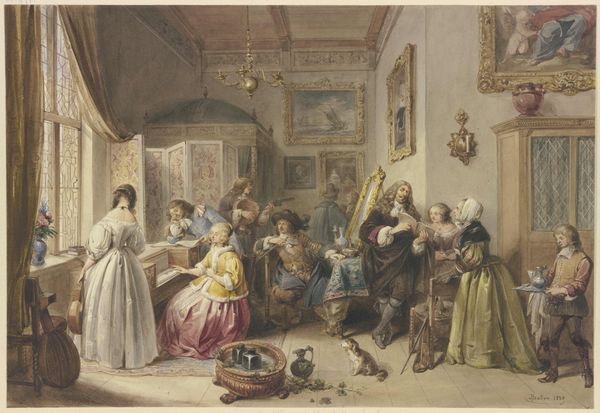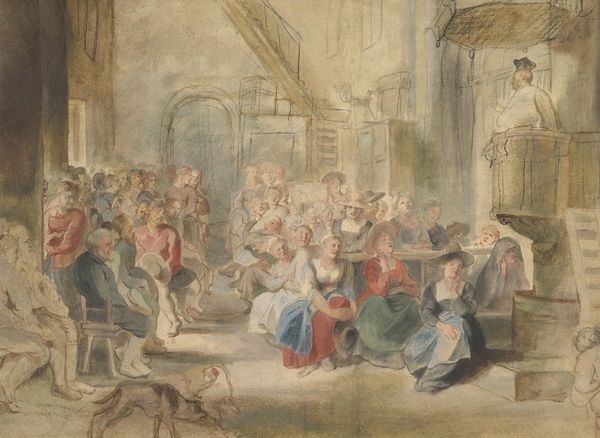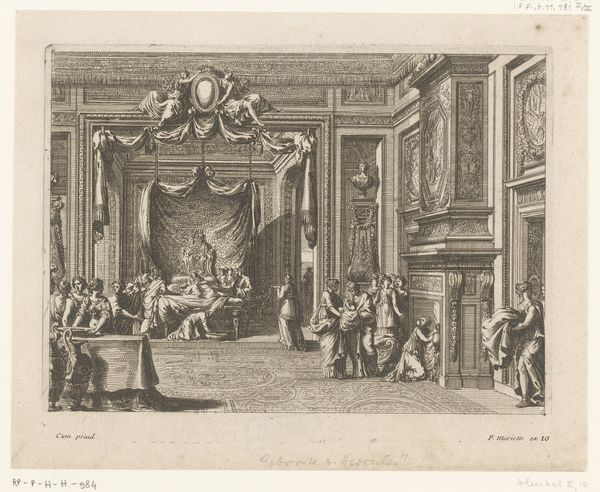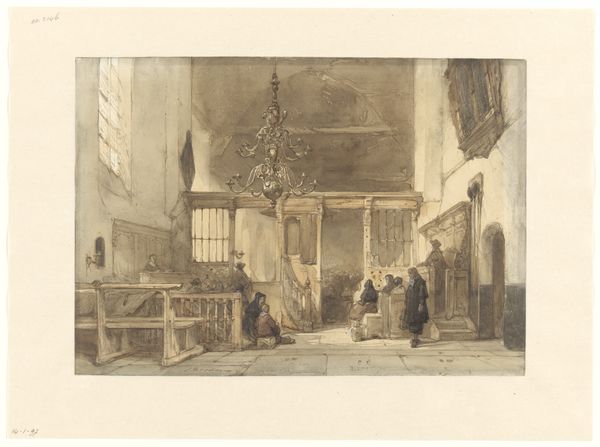
Interiør med besøgende i Palazzo Pitti i Firenze 1854 - 1855
0:00
0:00
Dimensions: 135 mm (height) x 215 mm (width) (bladmaal)
Editor: Here we have P.C. Skovgaard’s "Interior with visitors in the Palazzo Pitti in Florence," made between 1854 and 1855, using watercolor and drawing. The subdued, almost sepia tones give the impression of looking into the past. What's your interpretation? Curator: I see a fascination with the act of viewing itself. Notice how Skovgaard uses watercolor to depict the leisured classes consuming art. Consider the social context: tourism became increasingly accessible in the mid-19th century, opening up new forms of cultural exchange and commodity consumption. Editor: It's like a snapshot of cultural tourism becoming more mainstream. I never thought of it that way. Curator: Exactly! Skovgaard doesn’t just paint the interior; he shows us the production of meaning, where the wealthy literally "consume" culture. And what kind of labor made those trips possible, let alone the art they went to see? Editor: Right, it prompts a whole new way of thinking about it, questioning what enabled their "experience." Curator: The very act of rendering this scene in watercolor transforms a personal experience into a tangible product – a souvenir, almost. A consumable representation of cultural consumption. Editor: It really makes you question what's visible and invisible in the artistic process itself! Thanks for sharing those perspectives. Curator: Likewise! A lot of the labor becomes unseen, even in art that depicts cultural gathering such as this piece, so considering those unrepresented inputs in any analysis is vital.
Comments
No comments
Be the first to comment and join the conversation on the ultimate creative platform.
